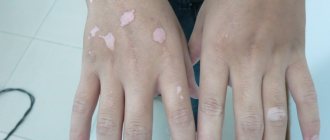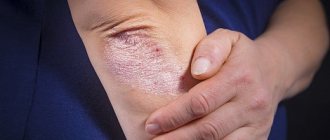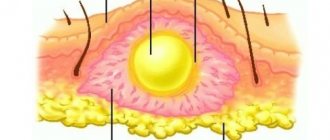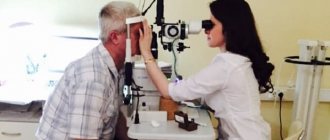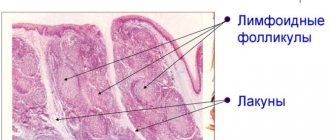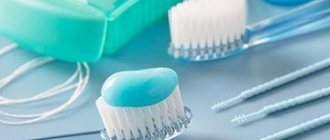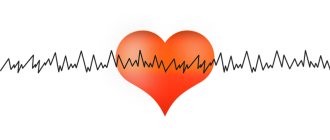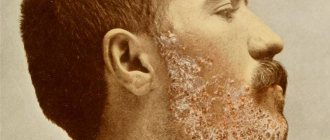General information about the violation
What do synechiae look like in a girl? Photo:
The labia minora most often stick together ; fusion of the labia minora and labia majora is less common. 3-10% of girls aged one to two years were diagnosed with this pathology.
The process of fusion lasts in different ways: the pathology can develop in a few days, or it can slowly progress over months.
Synechia does not pose a significant danger; it may not be accompanied by severe symptoms, but can progress without treatment, which will lead to the development of complications that will complicate the girl’s future life.
How is pathology diagnosed?
Synechia in girls can be easily determined upon examination; the presence of pathology is indicated by the following signs:
- The labia are connected by a thin film of light gray color
- By spreading the labia apart, the girl experiences painful sensations, but the adhesion does not disappear anywhere
- Upon examination, the vagina is visualized as partially or completely closed.
Normally, when the labia are separated, a fairly large gap is observed; a detailed examination of the vagina can be performed.
Reasons for appearance
Factors that lead to adhesion include:
- Excessively frequent washing. If parents wash their child very often (several times a day), actively use soap, gels with fragrances, this will lead to drying of the mucous membranes, the appearance of severe redness, and pain. During the healing process, the labia minora will fuse.
- Diseases of the genital organs. Insufficient hygiene of the genital organs also adversely affects the condition of the labia minora: vulvitis and vulvovaginitis develop, which lead to active inflammatory reactions in the area of the labia minora, which affects the development of pathology.
- Allergic reactions. If a girl has an allergy, her skin manifestations may affect the labia: the perineum turns red, and a rash is often observed. If the allergy is not identified and its treatment is not started, this will lead to the occurrence of synechiae. Components of the detergent used to wash underwear, food products, wet wipes, and diapers can act as allergens.
- Uncomfortable underwear. If underwear is made of synthetic materials, it cannot fully absorb everyday secretions, sweat and traces of urine, which affects the occurrence of genital diseases and diaper rash.
If the underwear is uncomfortable, small in size, with patterns or seams in the perineal area, it rubs the labia, which leads to trauma and sticking together.
- Diaper rash . If parents do not change a girl's diapers on time, her genitals come into contact with feces and urine, which, combined with the greenhouse effect, leads to diaper rash and diseases of the reproductive system.
- Complications in the process of bearing a child. The labia of girls whose mothers' pregnancy was complicated by an infectious disease or occurred with other disorders are more likely to grow together.
Also, fusion can develop against the background of dysbiosis, enterobiasis, ascariasis, diabetes.
In newborn girls, adhesions are observed extremely rarely, since their blood contains an increased concentration of estrogen received from the mother.
But gradually their level drops, and the risk of sticking increases.
Most often, the pathology is diagnosed in girls from six months to six to eight years old, then the likelihood of occurrence decreases, as the skin and mucous membranes of the genital organs strengthen and become more resistant to damage.
Why is there a delay in menstruation in teenagers? Find out about this from our article.
Causes of fusion.
In addition to infections that have entered the genitals, under unfavorable conditions and aggressive means, a girl’s body can accept soap, detergents and cosmetics that dry out the skin and negatively affect it. To prevent these processes, the body begins to produce healing substances, which fuse the labia minora, suggesting that this is a traumatic impulse.
Too tight, God forbid, and synthetic underwear also injure the mucous membrane and provoke the formation of synechiae.
Diapers work the same way. Wearing them too often overheats the girl’s genitals, and diaper rash is another step towards the onset of inflammation and fusion.
Metabolic disorders may also be a condition for such fusion.
Allergic reactions, which appear mainly on the skin, often affect the mucous membranes. Therefore, if you have a girl with allergies, you should be careful about the redness of her genitals.
Various urinary tract infections, intestinal diseases and clay infestations.
Complications in a woman during pregnancy are also the reason for the formation of synechia in the newborn child. It is especially worthwhile to be careful for those whose pregnancy was difficult: there was severe toxicosis and there were intrauterine infections.
But the most important factor for the start of the fusion process is the low level of estrogens - female sex hormones - in a little girl. For this reason, the fusion of the labia occurs precisely during the period of hormonal rest of the female body - up to 6 years. It is worth noting that congenital synechiae are extremely rare. Basically, this is an acquired problem, and only the labia minora are fused.
Symptoms and stages
Features of symptoms depend on the degree of fusion of the labia.
- I degree. The length of the fusion does not exceed 5 mm, urination is not difficult, and there is no pain. Initial stage synechiae can be easily cured with conservative methods and do not lead to complications.
- II degree. The length of the fusion exceeds 5 mm, problems with urination and moderate pain are possible.
If treatment for the pathology is not started at this stage, the child may require surgery.
The main signs of synechiae:
- Difficulty and painful urination. The girl cries when urinating, is forced to strain during the process, refuses to sit on the potty, and the duration of urination increases. When the fusion is significant, the direction of the jet changes: it is directed upward, touching the skin and clothing.
- Pathological vaginal discharge: white, yellowish, with an unpleasant odor.
- Changes in the appearance of the genital organs , which parents can identify when examining a child: the labia minora are joined together, not separated from each other, a thin membrane is noticeable between them. The vaginal fissure may not be visible, and with complete fusion, the urethra is not visible.
How to use Ovestin cream
The hormonal agent Ovestin should be applied along the adhesion line, without affecting the genitals. The standard course of treatment with Ovestin usually does not exceed 2 weeks. (if the pathology has not been treated previously), treatment of adhesions is carried out twice a day.
After the course of treatment is completed, you will need to take the child for an examination to evaluate the results of hormone therapy. If necessary, a specialist may recommend continuing to use the cream, only now the ointment is applied to children once a day.
Treatment also involves the use of regular baby cream, which should be applied immediately after bathing.
At the final stage of treatment, it is recommended to gradually switch to a cream with lanolin; it will help prevent the development of re-adhesions.
Features of hormonal cream therapy
It is necessary to treat synechiae in girls taking into account a number of rules so as not to injure the mucous membranes of the external genitalia:
- You cannot remove synechia yourself by separating the labia minora.
- The ointment is applied in a thin layer, followed by rubbing in the areas where adhesions form.
- After the synechiae resolve, you will need to continue using an estrogen-containing product for prevention purposes.
Contraindications
Ovestin is a hormonal drug, so there are a number of contraindications to its use:
- Intolerance to drug components
- Presence of estrogen-dependent neoplasms
- Bleeding from the vagina of unknown origin
- Current or previous presence of thromboembolism
- Porphyria
- Active liver diseases
- Changes in liver test parameters.
Adverse reactions
The development of side symptoms during treatment of synechiae in a child should not be ruled out.
It should be noted that during use of the cream, local irritation and itching may be observed (the child scratches the mucous membranes of the perineum).
Common adverse reactions include nausea and slight tenderness of the mammary glands. In rare cases, headaches and a sharp increase in blood pressure are possible.
Remember: preventing the development of pathology is much easier than treating it in the future. Take care of the health of your own children!
Complications
If the pathology was diagnosed in the early stages and the girl received treatment, the likelihood of complications occurring is minimal .
Diagnostics
Diagnosis of synechiae is not difficult: a pediatrician or pediatric gynecologist will determine the disease at the first examination.
During the examination, the gynecologist may also use a vulvoscope to take a closer look at the external genitalia.
Further diagnostics are aimed at identifying the causes of the pathology. The following diagnostic measures :
- taking a smear for microscopic and bacteriological examination;
- PRC diagnostics;
- linked immunosorbent assay;
- allergy tests;
- clinical blood and urine analysis;
- determination of blood glucose concentration;
- analysis of stool.
You may also need to consult an allergist and other specialists, depending on your symptoms.
Treatment options
If the pathology is extremely mild, the attending physician may decide not to start treatment. He will give the child’s parents a number of recommendations, and periodically the girl will need to undergo preventive examinations.
If the disease continues to progress , it will be detected in time. Most often, synechiae is treated conservatively. The following medications are used:
- Creams, ointments with estrogen (Ovestin, Kolpotrofin). They will gradually loosen the tissue in the labia area, and the fusion will completely disappear. Approved for the treatment of children over one year of age. The ointment should be applied to the area of adhesion before going to bed after hygiene procedures. It must be applied carefully, without pressing on the labia. When using hormonal creams, short-term side effects may occur: hairs may appear on the skin, and breast swelling may also occur. They are mildly expressed and disappear after discontinuation of the drug. Duration of use is 2-4 weeks.
- After using hormonal ointment, the use of additional ointments and creams (Calendula ointment, fragrance-free baby creams, such as Tip-Top).
Treatment of synechiae in girls
In the early stages of synechia in infants, they can be corrected simply - with the help of a special cream.
At night, an ointment containing estrogen is applied to the labia.
At the end of the course (the duration is strictly individual), the drug is replaced with baby cream. The use of perfume hygiene products must be limited. In advanced stages, the labia minora are separated surgically under local anesthesia.
After using this method, preventive treatment is carried out (lotions, ointments). Either method requires strict hygiene with frequent diaper changes.
Cream
An alternative to surgical treatment are vaginal creams with estrogen: Bepanten or Ovestin.
After hygiene procedures, anti-scarring agents Contractubex and Traumeel S are applied to the external genital organs. Malavit is used to relieve irritation. The effectiveness of creams is high in cases of initial and mild pathology, which makes it possible to avoid surgery. The disadvantages of using hormonal ointments include extreme care and application strictly to the sticky area. The drugs are gradually being replaced by fragrance-free baby creams.
How to use Ovestin
With Ovestin hormonal cream you can painlessly get rid of synechiae.
The drug is recommended for use in cases of estrogen deficiency and in children with synechiae. As a rule, a course of treatment is prescribed for a month. Local use of hormonal drugs is practically safe, and the course can be extended to three months, but if an effect is obtained in the early period, treatment can be stopped.
The advantages of Ovestin for pathologies of the mucous membranes of the genital organs are its mild and effective action, thanks to the component estriol, an estrogen analogue. The difficulty of use lies in the correct application technique. After hygiene procedures, twice a day, the drug is carefully applied in a thin layer with your finger to the fusion site. In this case, you should not use cotton swabs, disks, or apply pressure to the vulvar mucosa. Do not attempt to separate tissues. Ovestin cream is recommended for use until the adhesion is completely destroyed.
Contractubex for synechia
This gel is used in complex conservative treatment to affect connective tissues.
A positive effect is achieved from heparin and allantoin, which are part of contractubex: the components help smooth out adhesions and protect sensitive tissues. The gel is mixed with Traumeel C in the same proportion and applied with a finger in a thin layer to the site of synechia, similar to the use of Ovestin - gently and carefully, exclusively on the problem area.
Surgical intervention
The last therapeutic measure for synechia is surgery. It is used if conservative methods are unsuccessful. Surgical division, rather than dissection of synechiae, is carried out with local anesthesia, but in cases of tight fusion, general anesthesia is possible. Doctors always try to treat the problem without surgery. The painful process requires recovery. The girl may have neurotic problems, and in the future - psychosexual disorders, so it is advisable to show the child to several specialists before separating the lips in this way.
Komarovsky's opinion
Dr. Komarovsky reports:
- synechiae are not a disease , they should be considered an age-related feature;
- they are found in an extremely weak degree of severity in most little girls; only pronounced adhesions , which are rarely observed, pose a danger;
- If, in the presence of adhesions, the child has no discomfort and urination is not difficult, they should not be treated ;
- surgery is performed if the use of ointments was not effective;
- Anesthesia should always be used for surgical interventions .
Prognosis and prevention
In most cases, synechiae are successfully cured, and if parents carefully follow doctors' recommendations after treatment, the likelihood of relapse is extremely low .
Preventive measures:
- You should use wet wipes and detergents with fragrances less often;
- To wash children, it is enough to use water; you can also use special baby products;
- do not use regular soap or other products not intended for this purpose for washing;
- avoid swimming in polluted rivers, lakes, do not allow a girl without underwear to sit on the floor, on the sand or ground;
- it is also important to choose comfortable underwear made from natural fabrics, free of rough seams and prickly lace;
- Washing should be done in the morning, evening and after each act of defecation.
It is important to regularly examine your child's genitals. If redness, rash, pathological discharge, or signs of adhesions are observed in the perineal area, you should go to the hospital.
Dr. Komarovsky about synechiae in girls in this video:
We kindly ask you not to self-medicate. Make an appointment with a doctor!
Caring parents deep down dream of one day becoming even more caring grandparents. Problems that concern the genital organs and reproductive system of a child worry many. You will learn about what synechiae looks like in girls and how to recognize them by reading this article.
Features of treatment
Synechiae in girls does not necessarily require surgical separation. Treatment of a baby one or two years old, especially at the initial stage of the disease, can be done at home. Therapy includes careful hygiene, the use of special ointments, baths and observation by a doctor. Treatment methods are chosen by a specialist based on the clinical picture.
Surgical separation
Surgical intervention for the adhesion of the labia is a last resort. Separation and removal of synechiae is carried out in cases where conservative therapy has failed. The operation is performed under local anesthesia or general anesthesia within a few minutes by excision of adhesions.
The recovery period is painful; to ease urination and the general condition of the child, painkillers, antibacterial ointments, baths, and lotions are prescribed. Surgery does not guarantee that the tissue will not grow back.
Baby hygiene
If the labia are fused, but the pathology is at an early stage, the girl’s parents must provide proper care, including careful hygiene, so that the adhesion resolves over time:
- wash your genitals twice a day, and every time after bowel movements;
- Do not use soap often, choose a hygiene product without fragrances, paying attention to its acidity;
- antiseptics and creams can only be used as prescribed by a doctor;
- buy underwear made from natural fabrics and change it daily;
- Remove the diaper several times a day to allow the skin to “breathe.”
If there are synechiae, parents should take proper care of the baby
Drug therapy at home
Conservative treatment at home is prescribed for minor fusion of the labia. Preparations with estrogen (for example, Colpotrophin) are applied to the synechiae, but healthy areas of the skin should not be affected. The products loosen tissue, destroying adhesions and separating the genitals. Therapy lasts from 2 to 3-4 weeks. The ointment must be applied twice a day and cannot be used unless prescribed by a specialist. At the end of the course of treatment, the doctor should evaluate the results and stop or extend therapy.
In addition to hormonal creams, you can use conventional children's medications: Malavit, Bepanten. They have a calming effect on the skin.
Ovestin
Ovestin cream shows good results in treatment. It helps to painlessly get rid of adhesions due to a lack of estrogen in a child. The therapeutic course with Ovestin lasts 1-3 months. The product is safe, but if the desired effect is achieved, use can be stopped prematurely.
How to use the drug? After washing, apply a thin layer to the site of adhesions, without using cotton swabs or pads and without putting pressure on the mucous membrane. Ornion cream has a similar effect - it is a cheaper analogue of Ovestin.
Contractubex
Gel Contractubex
A positive effect in therapy is achieved with the use of Contractubex gel. It affects connective tissue with the help of active components: allantoin and heparin. They smooth out scars and protect delicate skin.
Contractubex is mixed with Traumeel S in equal proportions and carefully applied to the problem area - similar to using Ovestin. The results before and after therapy become noticeable already in the middle of the treatment course.
Folk remedies
Treatment of labia adhesion in a child can be carried out at home using folk recipes:
- An effective remedy is calendula oil. It has regenerating, anti-inflammatory and soothing properties. It is recommended to apply twice a day after washing the child.
- An infusion of chamomile, calendula and acacia flowers will relieve swelling if it hurts a girl to go to the toilet. The baby is placed in a bowl of broth for 10 minutes - the bath relaxes the muscles and reduces swelling.
- To wash children, it is recommended to use decoctions of nettle and St. John's wort. After manipulation, the genitals are lubricated with sea buckthorn oil in the affected area. It is important not to overdo it with hygiene - this leads to injury, and during the healing process, tissues re-stick together.
In severe cases, phytoestrogens are used - medicinal herbs with a hormonal effect (raspberry leaves, red brush, hogweed). After preparing the decoction, problem areas are wiped with it.
What it is?
Synechiae are called adhesions - fusion of the labia with each other. In the vast majority of cases, the labia minora are connected. However, it also happens that the large lips fuse with the small lips symmetrically.
Doctors believe that this happens due to a physiological lack of female sex hormones at a young age.
It is estrogens that make the labia elastic, dense, and tight. After giving birth, a newborn girl inherits a large amount of estrogens from her mother. It is protected from fusion.
However, hormonal reserves are consumed and not replenished, and by six months, every girl can experience what synechia is. There are many provoking factors. This includes insufficient hygiene, and inflammatory processes that occur in the external genital organs as a result of infection with bacteria, and inflammation that becomes a consequence of irritation of the skin and mucous membranes due to an allergic reaction, taking medications, contact with allergens, alkalis, and aggressive detergents.
The lips can be partially fused, and this will be a moderate synechia, or they can be a third, half or completely connected to each other. Such synechia will be called complete.
Sometimes this pathology is complicated by inflammation due to the fact that not only the entrance to the vagina is closed, but also the entrance to the urethra . Vaginal discharge has no outlet and becomes a source of inflammation and a threat to the girl’s entire reproductive system, and urination becomes difficult. This type of synechia is called complicated.
Mild forms of fusion do not require treatment. Complete synechiae and complicated forms should be treated as soon as possible. That is why it is important for parents to be able to detect pathological adhesions, recognize them and consult a doctor in time.
Symptoms
In the vast majority of cases, synechia (or several synechia) is detected during a routine examination by a gynecologist. And all because girls rarely make it clear that something is bothering them, because the fusion occurs unnoticed, it is not felt, the child has no pain or complaints. But attentive parents can and should suspect something is wrong even by minimal changes in the child’s behavior and the appearance of the little daughter’s genitals. It is worth paying attention to the following signs.
Behavior and well-being
With partial (smoothly developing) synechia, the child’s behavior does not change. The fusion process can take several months to develop, very slowly, or it can happen quite quickly. In order not to overlook the pathology, parents should carefully examine their daughter’s external reproductive organs after an evening bath.
With complete synechiae, when the fused labia minora block the urethra, it will be easier for parents to understand that something is wrong with the child. Every time she urinates, the girl will strain, strain, and worry a lot. This form of adhesive process does not cause severe pain, but causes a feeling of a mechanical barrier. Therefore, there will most likely be no screaming, crying or loud “signals” for help.
Moodiness, crying when urinating, disturbance of the baby's appetite, restless sleep in infants - such signs may accompany complicated synechiae. In such cases, inflammation develops - vulvitis or vulvovaginitis, in which the child experiences pain when urinating, almost constant itching and tingling in the area of the labia and the entrance to the vagina.
Description of the pathology
By this term, experts understand the adhesion or fusion of the labia minora or majora. This may occur throughout the entire perineum or affect only a third. In this case, there is no entrance to the vagina.
The labia are connected by a thin membrane. If complete fusion is observed, the urethral opening cannot be seen.
According to statistics, the peak of this disorder occurs in 2 age groups - 1-3 years and 7-8 years . In this case, the labia minora most often grow together. However, sometimes they are observed to be combined with larger ones.
This condition can be easily determined by performing a detailed inspection:
- the labia are connected by a light gray film;
- when the girl's lips are pulled apart, pain occurs, while the adhesive remains;
- It is possible to visualize only part of the vagina or it is completely closed.
In a normal state, the gap between the labia during dilution is quite large. In this case, the vagina can be examined unhindered.
Pediatrician Plus - Synechia (fusion of the labia minora) in girls
Signs of the initial stage
Synechiae at the initial stage are quite difficult to see. When full fusion has not yet begun, the adhesive film usually looks like separate threads stretched between the labia.
Parents should be aware that they should not try to tear the film or individual threads with their hands. This will cause severe pain to the child and create a risk of infection of the genitals. The separation of synechiae should be carried out by specialists - with the help of instruments and not without local anesthesia.
Signs of an “advanced” stage
A dense, opaque film of a bluish or grayish tint, behind which almost nothing can be seen - this is a symptom of a “neglected”, long-standing problem. The presence of inflammation, redness, rash and discharge depends on whether the fusion is complicated or not, or whether it is complete.
Changes in the child's behavior with long-standing synechiae will be insignificant. If something bothered the girl at first, then, most likely, the body has already learned to compensate for the inconvenience, and the baby is cheerful and active - if there is no inflammation in the acute stage.
Where to contact?
A pediatric gynecologist can assess the situation, who will examine the synechiae with a professional eye and tell you what and how to do. You shouldn’t be afraid to go to an appointment, because in almost 90% of cases treatment is not needed. Synechiae will go away on their own when puberty begins.
Just in case, the doctor will definitely take smear samples to determine the pathological microflora, and will also prescribe general blood and urine tests. If inflammation is severe, an ultrasound examination of the pelvic organs may be required.
A diagnosis that includes the terms “complete” and “complicated”, unresolved synechia in teenage girls may be grounds for surgical treatment. However, more often it is possible to solve the problem conservatively, with the use of ointments and creams - even before the girl turns 9-10 years old.
- Synechia in girls
- What they look like
- Doctor Komarovsky
- In boys
medical reviewer, psychosomatics specialist, mother of 4 children
According to statistics, 10 out of 100 girls aged from birth to two years are diagnosed with synechia of the labia. What it is? This is serious? How to treat? Can it be prevented? All our questions about synechiae in girls were answered by Tatiana ZHORNIK, doctor, obstetrician-gynecologist of the highest category, candidate of medical sciences.
Possible contraindications. Specialist consultation required!
Causes
The main cause of synechia in children is inflammatory processes in the vaginal area, labia minora or glans penis.
Doctors identify several characteristic reasons:
- Lack of basic hygiene procedures;
- Injuries;
- Allergies caused by food;
- Urinary tract infections;
- Diseases of the genitourinary organs;
- Diaper rash caused by diapers;
- Pregnancy pathologies caused by infectious diseases.
Such phenomena provoke the proliferation of pathogenic bacteria, which quickly affect the vaginal mucosa and labia tissue. Imperfect protective reactions are caused by the fact that newborns lack estrogens. Their synthesis begins during puberty.
What are synechiae?
Synechia is an adhesion that occurs due to the appearance of adhesions between internal organs or external parts of the body. Such fusions of the labia minora, and less commonly, of the labia minora and labia majora, can occur in young girls.
Expert commentary
Fusion of the labia minora may be complete or incomplete. The presence of synechiae in a girl on a small area of the skin of the labia minora is not dangerous, does not cause virtually any unpleasant sensations and, subject to hygiene requirements, resolves itself. Synechia or fusion of the labia minora, expressed to one degree or another, is found in approximately 10% of girls aged from birth to 2 years.
Causes of pathology of the labia in girls
The most common cause of fusion of the labia is a congenital pathology due to severe toxicosis of the mother during pregnancy or an infectious disease during gestation. However, there are other factors causing the anomaly:
- Improper washing and violation of hygiene rules. Healing of delicate skin after trauma to the vulva due to sudden movement or strong pressure can cause adhesions. Frequent washing with soap and rare diaper changes can also cause fusion of the labia.
- Infectious lesions - inflammatory diseases of the urinary tract and mucous membranes. A baby under one year old can become infected during childbirth or through household contact.
- Allergy. The rash is often localized on the mucous membrane. It can be triggered by food allergens, hygiene products, synthetic clothing, etc.
- Infectious diseases and frequent use of antibiotics also cause the appearance of synechiae.
- Lack of estrogen. Fusion in a one-year-old baby is sometimes a consequence of hormonal imbalance. Although low hormone levels in infants are normal, they can cause pathology. In such a situation, there is no need for treatment; by the age of 7, the adhesions will disappear.
Most often, synechiae is a congenital pathology
Causes of synechiae
Among the natural factors that contribute to the formation of synechiae are the following:
- low content of sex hormones estrogen (in itself is the norm for a child’s body);
- infectious and bacterial diseases;
- allergy.
External factors that can affect the formation of synechiae:
- the occurrence of diaper rash due to untimely change of diapers;
- rubbing underwear in the genital area;
- constant wearing of synthetic underwear;
- excessive hygiene.
Attention! Caring for the delicate skin of little girls requires special delicacy. Too frequent (many times a day) washing, even with the mildest baby soap, can lead to injury to the mucous membrane. Sponges and washcloths are not allowed!
This, of course, does not mean that you should forget about hygiene - insufficient washing can also serve as a provoking factor for the appearance of synechiae.
Expert commentary
First of all, a little anatomy. The labia minora are two thin folds that limit the entrance to the vagina, located from front to back and covered from the outside by the labia majora. The labia minora are not covered with mucous membrane, but with very thin, delicate and vulnerable skin. There is no adipose tissue in the thickness of the labia minora, but there are a lot of sebaceous glands. The peculiarity of the structure (delicate, thin skin) and location (warm, moist environment, closed state) of the labia minora creates the prerequisites for the development of various inflammatory processes, which are often complicated by the development of synechiae (adhesions). Additional factors that increase the risk of synechia formation in girls are considered to be the low level of female sex hormones (estrogens) characteristic of a child’s body and poor hygiene. In some cases, the formation of synechiae in girls is accompanied by metabolic disorders, intestinal diseases (especially often intestinal dysbiosis), allergic processes and helminthic infestations. The formation of synechiae can also be affected by:
- untimely replacement of diapers,
- frequent and generous use of creams containing zinc oxide;
- wearing clothes made of synthetic fibers by a child;
Treatment
If the child does not complain about anything, if he is not bothered by pain, itching, or has problems with urination, then you don’t have to think too much about treatment, says Evgeniy Komarovsky. The degree of fusion needs to be monitored from time to time by visiting a gynecologist. There is no need to “rush” to surgery, because by the beginning of puberty, after 7 years, the girl will begin to produce female sex hormones (estrogens), and under their influence, the labia will become more elastic, and the problem with fusion will be solved by itself. This outcome occurs in approximately 80% of girls.
The rest will be prescribed drug treatment during adolescence - an ointment containing estrogen (Ovestin), which will need to be rubbed into the labia for several weeks. Gradually, the medicinal cream is replaced with any neutral one that does not contain perfume additives or dyes. It is used after bathing.
The standard treatment regimen looks like this:
- for the first 2 weeks, “Ovestin” is rubbed twice a day;
- for the next 2 weeks, rub the ointment once a day; for the second treatment, use regular baby cream;
- in the future, Ovestin is canceled, only baby cream or another neutral cream is left, provided that the synechiae have separated.
The drug should be rubbed in a strictly defined way: only with your finger, not with cotton wool or sticks, and only on the area of the fusion, avoiding contact with adjacent areas. You need to apply the ointment with slight pressure, but at the same time make sure that the child is not in pain. Pressure is no less important than Ovestin itself.
Such effects are usually not observed when using ointments and creams with estrogen; only a small number of small patients may experience slight swelling of the labia. It disappears with further use.
Synechiae that are accompanied by problems with urination, unhealthy vaginal discharge, and pain should be treated immediately. Parents should remember well that even in such situations no one forces them to immediately take their child to a surgeon. First, therapy with the use of special estrogen-containing ointments is necessary, and only if it turns out to be ineffective, the child will be shown mechanical separation of the fused labia.
Evgeniy Komarovsky urges mothers not to agree to mechanical separation of synechiae manually - this is exactly what pediatric gynecologists often suggest doing. If your doctor is one of them, it is better to find another doctor who knows that in the 21st century it is better to use tools rather than fingers, and that the girl should definitely numb her labia first.
After a correctly performed procedure, Dr. Komarovsky recommends taking a course of using estrogen ointment to avoid re-union. According to medical statistics, the probability of relapse after labia separation surgery is about 30%.
To avoid re-fusion, or to prevent primary synechiae, the girl’s parents should remember that:
- You need to wash the baby under running water
from front to back, and not vice versa; - baby soap should be used no more than once a day
, and it is important to ensure that it does not get on the mucous membranes of the labia and vagina; - Children's linen and bedding should be washed exclusively with baby powder
; after washing, it is best to do an additional rinse with water that has previously been boiled and thereby “removed” chlorine; - after water procedures
, as well as swimming in a river, sea or pool, the girl must wear dry, clean underwear and panties; - a baby who has not yet learned to go potty
needs to change disposable diapers more often, make sure that there is no contact with feces and prolonged contact with urine; - Panties should be purchased exclusively from cotton
, white, without textile dyes.
Dr. Komarovsky will tell you more about synechia in girls in the next video.
From the point of view of female anatomy, the labia minora are the most delicate and thinnest folds of skin. They are located under the labia majora and serve as a cover for the vagina. The absence of mucous membrane, adipose tissue and the presence of sebaceous glands, as well as the closed state and moist, and even warm environment at the junction of the labia minora, provides an excellent opportunity for inflammatory processes, as a result of which fusion often begins.
Fusion of the labia can be of different types: complete or incomplete. If non-complete synechiae (short length fusions) do not cause any unpleasant sensations and you can get rid of them yourself by correcting the girl’s hygiene, then complete fusions are much more dangerous. They can provoke a violation of the outflow of urinary fluid, cause inflammation of the tissues of the external genital organs, provoke damage to the internal ones, and also negatively affect the functioning of the urinary system.
Fusion of the labia is essentially a natural healing process of healthy tissue in order to protect them from any aggressive influence, something like how a wound heals during an injury, forming small adhesions. In the case of the labia minora, as a result of infections and the development of other unfavorable conditions, which we will discuss later, the body begins to fuse the labia minora in order to protect them from aggressive influences.
What should mothers of girls pay attention to?
With timely diagnosis, synechia does not cause discomfort to the baby, is easy to treat and goes away without a trace. However, advanced cases can have serious consequences, so it is important for parents to pay attention to the condition of the genital organs and the general well-being of their daughter and, at the first sign of concern, contact a pediatric gynecologist.
Consultation with a doctor is necessary if:
- the girl constantly experiences difficulty urinating (cries, strains, complains, avoids going to the potty);
- there are even minor changes of any nature in the genital area, including redness, irritation or peeling.
Expert commentary
Firstly, if you notice any changes in the structure of the genital organs in your baby or something is not clear to you, do not be shy and do not think that this is how it should be. Consult a pediatric gynecologist for advice.
Secondly, if the baby has difficulty urinating: she strains, experiences discomfort, is capricious, cries, and this is accompanied by almost every act, it is necessary to sound the alarm. Don’t chalk it up to the fact that your child refuses to sit on the potty because he’s capricious. Perhaps this is a signal.
Thirdly, regularly examine the baby’s genitals - this should be part of a set of hygiene measures. If you experience rashes, redness, peeling or discharge, do not assume that everything will go away on its own. The hope of coping with the problem using home methods most often does not come true. Incorrect or late treatment can lead to complications.
If you have any complaints or questions related to the condition of a girl’s genital organs, immediately contact a gynecologist for children and adolescents for clarification!
Diagnosis of synechiae
If you find any warning signs in your child, do not hesitate - one visit to the doctor will dispel your doubts. To diagnose synechiae or exclude this diagnosis, an examination by a pediatric gynecologist is sufficient. To determine the cause of the disease, the doctor will order tests and, taking into account their results, prescribe comprehensive treatment. But perhaps no treatment is required and the doctor will only recommend regular monitoring and strict hygiene.
Expert commentary
Synechiae in girls is very easy to detect - to make a diagnosis, it is enough to examine the external genitalia. Synechiae in girls looks like a thin whitish-gray film connecting the lips. The film may be on a very small area of the lips, but it can also cover the entire entrance to the urethra and vagina.
To find the causes of the fusion, the pediatric gynecologist often prescribes a series of tests, including:
- smear analysis (to determine the nature of the inflammatory process),
- general blood and urine analysis,
- stool analysis for dysbacteriosis,
- feces for worm eggs and scrapings for enterobiasis,
- blood sugar test.
Prevention of synechiae
What to do to prevent the development of synechiae of the labia and their consequences? Our expert recommends following 7 simple rules!
of two should see a pediatric gynecologist at least once .
Timely change of diapers, or better yet, early refusal to wear diapers
Keep allergic girls , who are more susceptible to developing synechiae, under special control.
Pay due attention to the hygiene of the baby’s genital organs : wash the girl morning and evening under warm running water, gently and delicately.
Do not use any ointments or creams without a doctor's recommendation.
Promptly respond to any alarming symptoms that are observed during the act of urination in a girl, to complaints from the child himself regarding discomfort in the genital area.
When prescribing treatment, follow it strictly , because an advanced process can develop into inflammatory diseases and subsequently lead to disorders in the girl’s reproductive system.
To prevent relapses, you should use baths with herbs and any fatty cream or vegetable oil after each toilet of the external genitalia (the first month - every day, then 1-2 times a week).
Synechiae in girls tend to occur again, up to 7-8 years of age, so after treatment it is important to regularly examine the child and, if necessary, begin re-treatment.
Synechia in children - fusion of the labia minora and majora in girls and the head of the penis with the foreskin in boys - occurs quite often. How to understand that a child needs treatment? Can the problem be prevented? What causes the disease? The answers are given in the article.
Possible consequences of the formation of synechiae
Timely treatment will avoid negative consequences. However, it is important to understand: synechias do not tolerate neglect. If the disease is neglected, it can lead to serious complications.
Expert commentary
The danger of this pathology is that when the labia minora and labia majora stick together in the vagina, a closed space is formed in which vaginal discharge accumulates. They, in turn, create a favorable environment for the development of bacteria, which first results in inflammation. Difficulty urinating contributes to the development of inflammation of the bladder (cystitis) or the urethra (urethritis).
Also, synechiae leads to improper formation of the labia, thereby having a direct impact on the reproductive system. In the future, the girl may have problems conceiving and bearing a child. There is also a high risk of developing infertility.
How to treat synechiae?
To treat synechiae, as a rule, a special ointment containing estrogen is prescribed. After completing the course, the duration of which is determined individually, the ointment is gradually replaced with the usual neutral baby cream recommended by the doctor. More serious situations may require surgery. In this case, synechiae are divided under local or general (in rare cases) anesthesia.
Expert commentary
If the synechiae between the labia minora and labia majora do not exceed 5 mm in size, then they are practically not dangerous to the child’s health. The fact is that they do not impede the flow of urine, do not create pain or discomfort for the girl, and therefore do not require treatment. The girl's parents need to take the girl to a pediatric gynecologist every 6 months.
After examination and receipt of examination results, the pediatric gynecologist prescribes a special comprehensive treatment for synechiae. Depending on the process, the doctor will prescribe conservative or surgical treatment for synechiae and give recommendations on proper care, hygiene and, importantly, the baby’s diet.
When fusion of the labia minora is detected in time, it is not difficult to treat. Locally, a special ointment is used to treat synechiae for 7 days to 2 months, and the labia gradually diverge. In advanced cases, it is necessary to separate them surgically, and then carry out preventive treatment (baths, special ointments).
Treatment.
After passing all the tests and making a diagnosis of genital fusion, you should begin treatment for your daughter as soon as possible. Depending on the length and severity of synechiae, the treatment process can be conservative, medicinal or surgical.
Conservative treatment methods.
They are used only in cases of incomplete fusion and in the absence of inflammatory processes.
- Correct hygiene procedures. Washing in the morning, in the evening, and also after each bowel movement, with warm clean water only using hands without various flavors and antiseptics. Do not constantly use soap and sponge.
- The genitals should always be clean and dry.
- Refusal to use wet sanitary napkins, as well as powders and various waxed creams.
- Replacing colored synthetic underwear with colorless cotton.
- Bathing the baby in water containing a solution of potassium permanganate, St. John's wort or chamomile.
- Daily short-term massage with light pressing semicircular movements using baby cream.
This kind of treatment is, first of all, the prevention of fusion of the labia minora in little girls. Following these recommendations will allow you to get rid of small synechiae in a week or two. However, remember that even if you have never encountered synechiae, girls under 6 years of age need periodic visits to a pediatric gynecologist - at least once a year! Well, if there have already been fusions - at least once a month, because relapses of synechiae are a very common occurrence.
Drug treatment methods.
Used in cases of complete fusion, inflammation and difficulty urinating. It involves the use of special creams, such as "Ovestin" and estrogen-containing drugs, such as "Kolpotrofin", as well as other medications prescribed only by a specialist. In this case, the method of applying medications plays a big role. They should not be applied to all the girl’s genitals, but only to the synechiae. Moreover, this must be done by slightly pressing and spreading the labia minora.
Surgical method of treatment.
Despite the fact that today this method can be completely painless, thanks to the use of general painkillers, it is still used extremely rarely - in case of complete fusion and when it is impossible to use medications.
The question of solving the problem of how exactly to treat fusion of the labia lies, of course, on the shoulders of the parents. Only they, and only after consultation with a pediatric gynecologist, should make final conclusions. If you find even a small fusion of the labia in your daughter, take action immediately, because synechiae, if left untreated, can be very dangerous. External discomfort, infectious diseases, improper formation of the perineum, serious problems with reproductive function in the future - all this can be easily and quickly avoided if you do not neglect the rules of hygiene, be attentive to your child, regularly undergo scheduled examinations and diagnose the problem in time.
Synechia in children - fusion of the labia minora and majora in girls and the head of the penis with the foreskin in boys - occurs quite often. How to understand that a child needs treatment? Can the problem be prevented? What causes the disease? The answers are given in the article.
